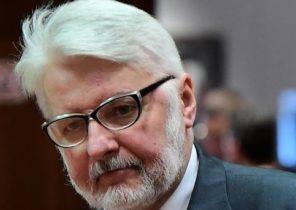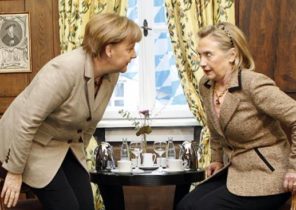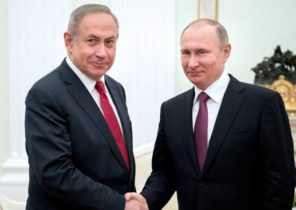
Gender policy and gender relations in society are largely determined by the gender imagery that is emerging in the public consciousness.
Gender imagery in modern Russia is determined by three major trends. These trends, Malagasy one another, give rise to a number of contradictions that have an impact on state gender policy and on the attitude of Russians to the gender issue.
The first trend is a tendency of conservation in the former Soviet Union gender imagery, characteristic of the Soviet period.
The second trend is the development in the former Soviet Union various forms of neo -. During Soviet times, traditional forms of gender relations largely disappeared in the post-Soviet reality of the conservative-traditionalist gender-family model is largely constructed afresh and in a new environment, though supported by a number of authoritative to 1917 institutions (primarily religious).
The third trend is the entry of Russia into the global communicative and informative space with the opening in 1991 of the borders, which gave the inhabitants of post-Soviet territories the opportunity to travel the world with access to foreign sources of information, and with the emergence and development of the Internet. This trend can be described as the integration of the Russian population in the dynamics of development of gender, peculiar to the Western world.
In the beginning of its existence Soviet Russia (since 1922 — the USSR) declared itself as a state whose purpose is to build ultramodernists companies. Almost first this radical modernism manifested itself in the early Soviet gender projects.
It should be noted that early Soviet gender policy was composed of two semantic elements that coincide only partially. The first was the item directly feminist, the goal of its members was the struggle for women’s equality as such. The radical social-democratic movement was attended by such notable theorists and practitioners of feminism, as I. F. Armand, A. M. Kollontai.
The second element was related primarily to the “real politics” of the Soviet state. In pre-revolutionary Russia, women represented the most conservative part of the society which are not involved in the public social sphere and uneducated. For solving problems of radical restructuring of society, the Soviet state was necessary to overcome the resistance of this conservative beginning. To overcome this resistance, on the one hand, was used by feminist ideology, on the other — strikes at the structures that supported traditional gender relations, which subordinate social and familial role of women (particularly traditional religious institutions).
Formally, Soviet society was very quickly found himself on the frontier of the global process of finding women equal status with men. In many respects, many developed Western countries have reached the level of the Union in relation to gender only in the second half or even the beginning of the last quarter of the twentieth century. In practice, the resistance of the Soviet gender politics “from below” (including from women themselves) was strong enough, caused quite a mixed picture of gender relations, especially if we take into account the social differences between different regions and between different population groups.
A very important factor in the development of gender mainstreaming has been a negative attitude to the Soviet gender policy on the part of educated strata of society. This negative attitude was often caused by not the gender policies of the Soviet government — it was part of a negative attitude to the Soviet regime itself, its ideology, and in particular, to its practice as a whole.
Part of the highly educated layer, in whole or in part not accepting the gender policy of the Soviet power, were neither expelled nor destroyed, nor repressed, but rather integrated into the Soviet reality. Alternative Soviet gender ideology in part highly educated layer existed in semi-underground, never disappearing completely, and gradually increasing, helped by the refusal of the Soviet government from the radical forms of early gender project that occurred in the late 20’s-early 30-ies of XX century.
Special rejection on the part of highly educated layer caused it radical Bolshevik feminist side of the gender programme associated with the breaking of a number of gender stereotypes. Granting women civil rights have integrated into the Soviet reality of the representatives of the highly educated layer of objections, and even Express non-public, generally do not cause.
In this environment in varying degrees, cultivated a romantic type of gender relations, a characteristic kind of aristocratic society, in part to companies raznochinnaja pre-revolutionary era. Used the characteristic memes of the type “the weaker sex”, “lovely sex”, “beautiful lady”. On the one hand, the female part cryptophycins the Russian intelligentsia endowed with some higher qualities (heritage of the Silver age), encouraged the Ministry to her as superior to the man first. On the other hand, this attitude had its “shadow” a desire to distance the woman from the “horrors” of public life and to restrict its sphere of romantic relationships, family and life. Value meme “family comfort” for the Soviet intelligentsia cryptophycins was quite large — it was often a form of, implicit opposition of Soviet power, a form of protest against the totalitarian anti-humanism, the destruction of private space and minimize the freedoms of the individual. The cult of “family comfort” trenirovatsya Soviet ideology used against him meme “philistinism”. However, this cult was only part of the latent anti defeinitely women. The strategy of this struggle it is assumed, for example, extra-marital sexual relationships and the Bohemian, non-conformist lifestyle. The image of “Builder of communism”, which had to conform to the “Soviet woman”, was predominantly masculine, but because of the strategy of counteraction in the environment of the intelligentsia assumed the cultivation of femininity in a woman that could act not only as wives and mothers, but also lovers. For example, in art from the time of “thaw” played a significant role conflicts associated with extramarital relations, which, as such, was not considered by the authors in a fundamentally negative way (Yevgenia Albats, “It was not some deviant behavior, anything like that — it was more in the mainstream”).
Proposed to the Soviet government the image of masculinity was disagreeable to a much lesser extent — precisely because of its more traditional character in comparison with the proposed image of the “Soviet woman”. Cryptophyceae intellectuals focused on very traditional images of manhood, choosing as examples the characters of Remarque, Jack London, Hemingway. The difference of the intellectual image of masculinity with the image of the authorities, consisted primarily in the fact that the latter involved “the service of the party”, and the first was mainly individualistic. A challenge to the traditional male gender roles were abandoned only in the late 60s of the first Soviet hippies with their cult of non-violence and “non-action”, but, unlike Western countries, this trend in the USSR has not received mass development.
An important factor in the change of gender policy in the Soviet Union was repression against the “left deviationists” and discrediting many aspects of their ideology. One consequence of this process was a partial turn to traditionalism, including on gender. The new laws made it difficult the divorce process, with a few exceptions were criminalized abortion were not developed manufacture of contraceptives. To the fore came the propaganda image of woman as “wife and “mother” — the woman had to remain a “fighter labor front.” The Stalinist government encouraged procreation, and condemned adultery. Radical early Soviet gender project was actually scrapped.
However, many of the gender innovations that came with the revolution, was preserved and maintained by the Soviet authorities. Women kept everything uncovered in the years after the civil rights and if those rights with power stimulirovanie, this simulation did not have a specific gender focus. Women are not so often held the highest political and economic leadership positions, but there were quite a lot among middle managers. Along with this gender image of women cultivated by part of the intelligentsia, was the Soviet government relatively tolerant. Thus, until the late 80-ies in the Soviet society coexisted two women — the official and “intellectuals”.
In the end, the USSR was a situation in which women are to some extent dominated in the private sphere. The household lay mainly on them, while they, as a rule, belonged to the prerogative of the allocation of the family budget and the adoption of certain important decisions within the family. It was assumed that the man realizes himself for the most part in the General social environment, but their initiative is often suppressed by the Soviet Union existed in a hierarchical and bureaucratic system (as a result, the meme “initiative is punishable”). In the end the real gender the way men were largely infantile.
Profound social changes that began to occur in the second half of 80-ies led to the transformation and partial change of the dominant in the late-Soviet (and later post-Soviet) society gender images. These processes were influenced primarily two opposite ideological trends — the conservative-traditionalist, and Western.
Special power of conservative traditionalism has given the fact that it was supported by substantial part of the highly educated segments of the population, to preserve the rejection of the Soviet gender project, which eventually revealed itself as a partial or complete denial of the modernity project itself and the attraction to the various projects of “traditional society”. In post-Soviet society, a significant role is now played by the conservative-traditionalist-minded intellectuals. Unlike Western conservatives, the post-Soviet conservatives had to reconstruct pre-revolutionary conservative ideology a century and more ago, or use a radical “conservative-revolutionary” neotraditionalists models such as the Eurasian. In the post-Soviet conservatism was ideologically close to the phenomenon that the West received the name of “alternative right”.
The criminalization of the socio-economic sphere contributed to the spread of the archaic cult of brutal masculinity and infantilization of female images. In this situation, in society, widespread understanding of the man as “breadwinner” and “head of family” and of woman as “homemaker”. As a result, women have once again become very relevant, for example, problems with domestic violence and employment.
On the other hand, gender-based sociopsychological dynamics have influenced and continue to influence the development of systems of communication (especially the Internet), significant more than in the Soviet Union, the availability of different kinds of information and openness of state borders. In the end, in the post-Soviet space in varying degrees, are approved by the trends in Western countries: declining birth rates, later marriage, lengthening the time between marriage and first birth, the increasing number of people consciously do not want to have children, etc. In the society is the promotion of gender imagery typical of Western countries, the erosion of rigid gender stereotypes and roles.
Separately should be said about the way the feminist movement in the consciousness “of post-Soviet man”. On the one hand, feminism in the former Soviet Union is seen by many as “the terrible of the Bolshevik experiment”. On the other — seems part of the population as part of a “decaying” culture of the West, the weapon of the West in the fight against “tradition”. Enough widely believed that women in Russia have earned their equal rights before the women of other countries. This position contributes to the perception of modern Western feminism as a phenomenon of absurd, redundant or outdated.
As for the current Russian authorities, it is more inclined to support the conservative-traditionalist gender trend, although it is possible to say that the ideology of the current Russian government in relation to gender includes all three trends described above.







